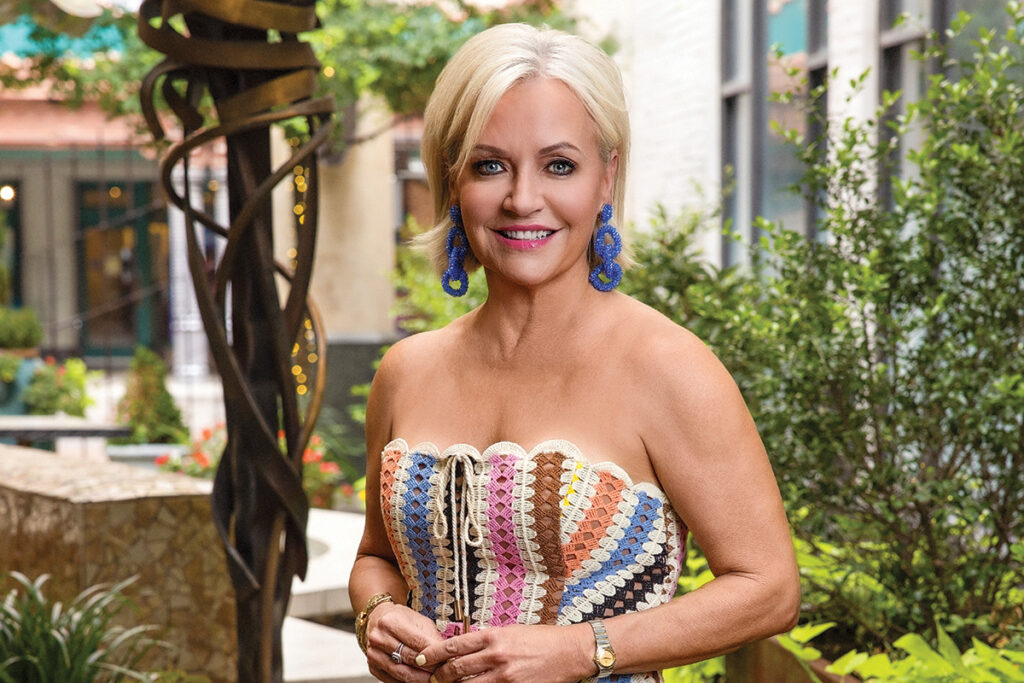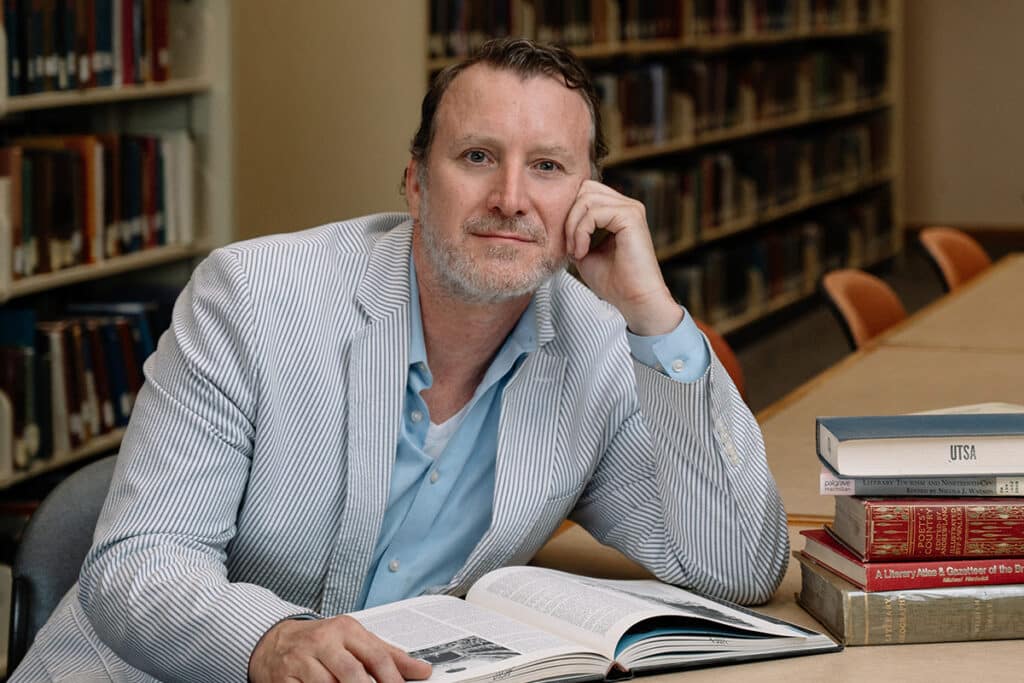Mobilizing a Global Business to Save Lives
Linda Myers was only a year into her career as a lab scientist when she assumed her first leadership role.
“I was always a problem solver,” she says. “To be an influencer and get things done it’s always better to be in a position where you can affect change. That has always attracted me. But I am also a collaborative manager.”
That first “influencer” position involved supervising the blood transfusion services at a hospital-based blood bank. Today, Myers is the CEO of BioBridge Global, the nonprofit parent company for several entities: the well-known South Texas Blood & Tissue Center (STBTC), QualTex Laboratories, GenCure and the Blood & Tissue Center Foundation (BTCF), a fundraising arm. The umbrella entity was established in 2013 to more effectively support both health care services and biomedical research.
 The day we meet, she has just returned from a meeting of Blood Centers of America (BCA), a member-owned organization that helps the community-based blood banks to sustain themselves in a changing health care landscape. It used to be that the local blood bank collected and distributed blood products to area hospitals, but today hospital chains are looking for big providers that can supply all their institutions regardless of geographic location. That has put extra pressure on community centers, explains Myers.
The day we meet, she has just returned from a meeting of Blood Centers of America (BCA), a member-owned organization that helps the community-based blood banks to sustain themselves in a changing health care landscape. It used to be that the local blood bank collected and distributed blood products to area hospitals, but today hospital chains are looking for big providers that can supply all their institutions regardless of geographic location. That has put extra pressure on community centers, explains Myers.
“Through BCA we can compete nationally for contracts.”
Blood and blood components, such as red blood cells or plasma, are still, of course, collected from volunteer community donors and subsequently tested in the lab to make sure they are safe for medical use, but the scale and scope of both operations have changed dramatically. Myers joined STBTC in 1994 and in collaboration with the former leader, Dr. Norman Kalmin, set out to upgrade the entire operation by enhancing the quality assurance system for both blood collection and testing.
“AIDS became a concern at the time, and I saw an opportunity to standardize and improve the quality of the operation to stand out among other centers,” she recalls. “As a director of quality assurance, I led the initiative to apply for ISO (International Organization for Standardization) certification, and we became the first center in America to get it in 1996. These standards were higher and provided a more structured approach to quality assurance than the FDA regulations. I am proud of that accomplishment.”
After rising to the position of executive vice-president, Myers added a new responsibility in 2007 when QualTex Laboratories was established as a separate nonprofit dedicated exclusively to testing. Under her leadership, it has become the largest nonprofit testing lab for whole blood and plasma donations in the country, going from performing 5.5 million tests in 2007 to 10 million in 2014. Huge pallets of collected blood from different places in the world arrive in San Antonio for testing every day.
“We are one of the biggest FedEx receivers in town,” she notes.
Securing contracts for QualTex has been a big part of her job and the main source of income for BioBridge. A second, larger lab is located in Atlanta.
“What’s really critical to what we do is having access to donors. Nothing happens without them,” states the CEO. “The blood bank has a whole department working on recruiting donors. They organize blood drives in churches, schools, companies and with civic groups. As baby boomers age, we have to find new ways to motivate younger donors.”
Myers herself has made donations a number of times, including on a recent October day when I was invited to see the donation room activity and she surprised me by joining a small group of donors who had come to have their blood drawn. It doesn’t take long to give a pint, and each pint is precious. A pint of whole blood can be separated into plasma, platelets and red blood cells, potentially saving the lives of three sick people. All BioBridge employees pitch in without hesitation in an emergency.
New technologies also allow donors to give only certain blood components rather than whole blood, most notably platelets, heavily in demand in cancer treatments, yet impossible to store for longer than five days. Not having enough of these and other products can be scary, given that lives literally depend on a ready supply.
As medical research increasingly focuses on regenerative therapies that utilize human tissues, BioBridge has responded by consolidating existing tissue recovery operations with newly designed ones to create a third subsidiary named GenCure.
Established in 2013 with three distinct divisions, it specializes in the collection, processing and distribution of a range of human biomaterials, from skin, cartilage and bone, to blood marrow and stem cells, both the adult variety and those derived from umbilical cord blood. Until recently, cord blood was routinely discarded with the placenta after the birth of an infant, but new research is harnessing its considerable healing power.
These materials are used to help a great variety of patients, including burn victims (skin grafts), leukemia sufferers (bone marrow), people with damaged organs such as diabetics and heart patients (adult stem cells), and children and adults with blood cancers and immune system deficiencies (cord blood stem cells).
While some of the tissues, such as skin and bone, are used in area hospitals, cord blood is distributed through a national registry program similar to the organ donation system, which means it must be frozen and stored until the right biological match is found. So it’s an expensive operation to run, points out the CEO. In the case of bone marrow, BioBridge identifies potential donors and enrolls them in a national database accessible to all patients. Then the marrow is actually collected when there is a need and a match. Myers is pleased that African–American and Hispanic San Antonians have come forward as donors in substantial numbers, given that donations among minority groups are often insufficient to meet the demand.
GenCure is BioBridge’s most research-centered affiliate. “It’s a very exciting field. The work that’s done today is going to be saving lots of lives in the future,” says Myers. “Today we are pioneers in this field.”
Growing up in Carrizo Springs, young Linda developed an interest in science, thanks to an inspiring chemistry teacher and a friend’s mother who ran a hospital laboratory.
“She would take us to see what she was doing, and I admired her work,” recalls Myers. “I wanted to be in an environment where I could help people, so I decided that that’s what I wanted to do.” She eventually earned a degree in medical technology from Texas Tech and later pursued additional training and certifications.
Laboratory scientists – also referred to as medical technologists — are difficult to find nowadays because fewer colleges offer the degree. BioBridge solves the problem by recruiting biologists and other scientists who are then trained on the job. A mother of three sons and grandmother of five, she says she is working on getting the kids interested in science. The opportunities are just wide open for them.
Divorced from her first husband, Myers is now happily married to her “high school sweetheart,” Scott Myers, with whom she reconnected at the school reunion 21 years ago. When I express a slight surprise that she took his last name despite being already established under a different surname, she admits to being “kind of traditional in that way.” The couple have a ranch near their hometown – “a cow and calf operation” — and Linda notes with satisfaction that she has her own branded cows.
Asked if she had a guiding principle that helped her through life and career, she thinks for a moment:
“One thing I have always done in my career is try to be the best I can be.” Then she elaborates beyond that, “You can’t wait to be totally prepared for every opportunity. When an opportunity presents itself, you have to jump. And always stay focused on the future; don’t stare at the past.”
This approach has certainly served her well. Today she is the only woman among 12 CEOs who get together once a month to discuss business issues as members of the regional chapter of Vistage International, a peer-to-peer organization for top business executives. True to her principle of focusing on the future, Myers is always pursuing new technologies and strategies for her organization as well as collaborations with other science institutions in town such as Southwest Research Institute, UTHSC and UTSA.
“I am getting toward the end of my career, and I am concerned about my legacy,” she explains thoughtfully. “I want to have stability for this organization and make sure that we can continue to fulfill our mission. Keeping all the horses moving in the same direction at the same time can sometimes be challenging.”
By Jasmina Wellinghoff
Photography By Jessica Giesey




